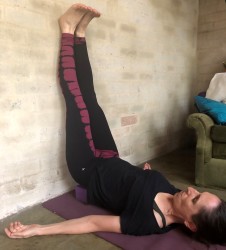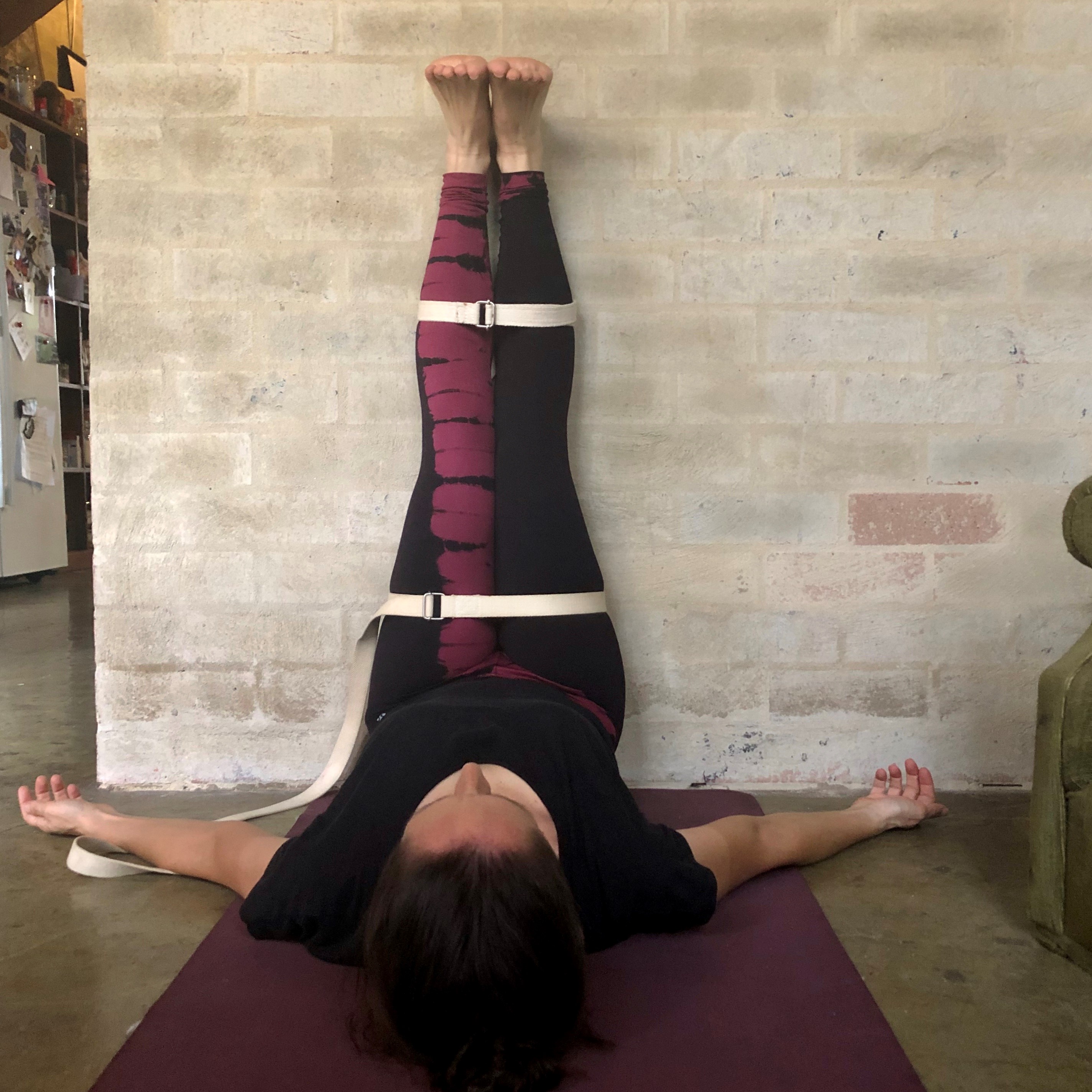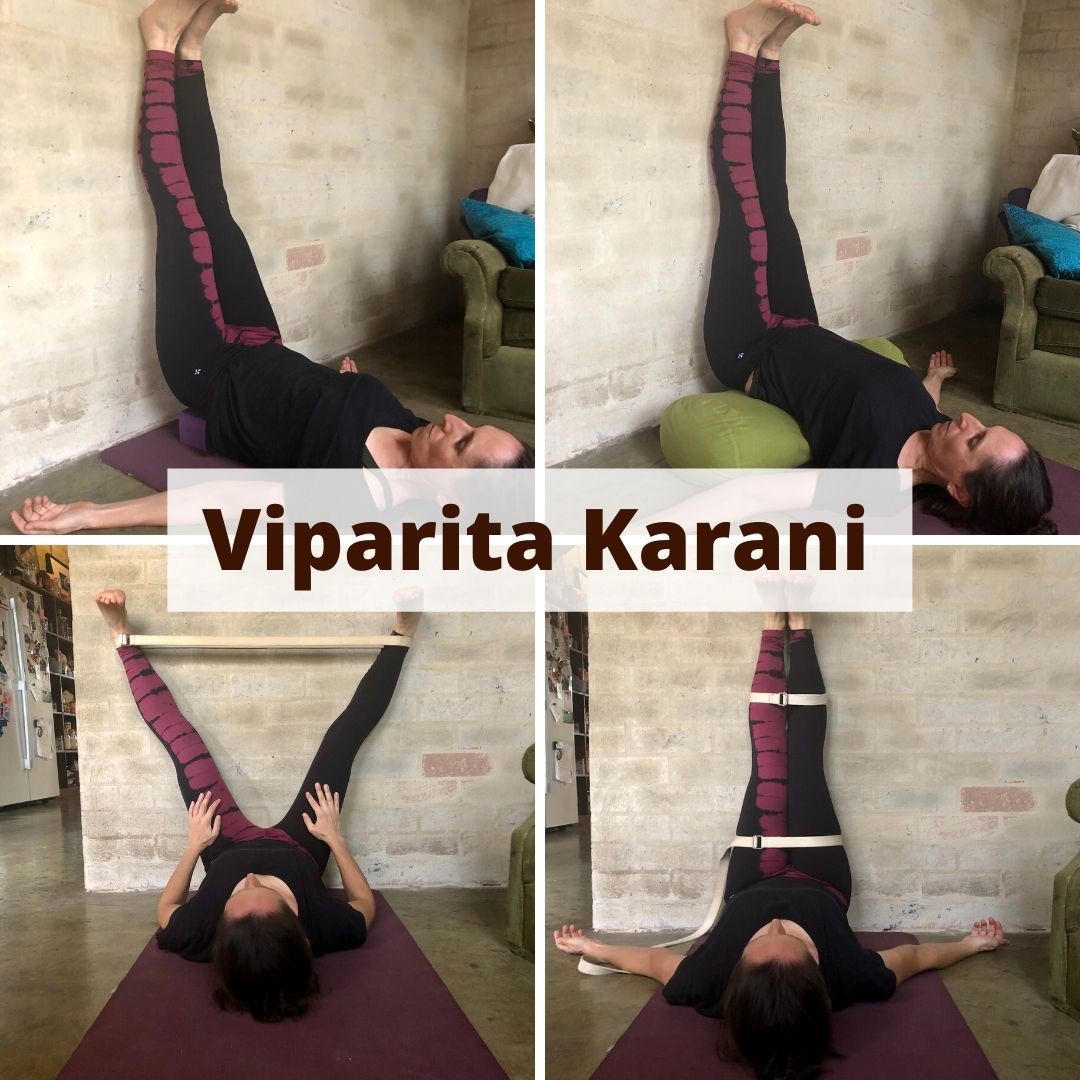Viparita – upside down, inverted, reversed
Karani – action, doing
 A more accessible version of shoulder stand, Viparita Karani is a restorative pose that is often done with the legs up the wall, but can also be done freestanding like in the black and white photo of BKS Iyengar to the left.
A more accessible version of shoulder stand, Viparita Karani is a restorative pose that is often done with the legs up the wall, but can also be done freestanding like in the black and white photo of BKS Iyengar to the left.
Often referred to as ‘legs up the wall’ it’s a soothing and relaxing pose for the body and mind, that is perfect for managing times of stress and anxiety.
In his book, Yoga - The Path to Wholistic Health, BKS Iyengar says this asana boosts confidence and alleviates nervous exhaustion. In class, we use this pose to help overcome jetlag and chronic fatigue, as well as varicose veins and insomnia, among many other ailments and conditions. Other benefits of this pose include:
- Relieves: tired legs and feet
- Stretches: the back of the legs
- Calms: the mind and nervous system
YTGS - top three tips for practicing Viparita Karani:
1. Your buttocks should be as close to the wall as possible, but don’t necessarily need to be against the wall – especially if you have tight hamstrings.
2. While the buttocks and hips should be supported on some height, the head, shoulders and upper back should be resting plat on the floor.
3. Allow a small amount of space between the wall and your chosen prop, and let the buttocks hang over the edge slightly to allow the energy of the legs to release down into the hip sockets.
Viparita Karani Four Ways - with Romina:
Romina shows us four different ways to practice Viparita Karani at home, depending on what props you have available. Try them all if you can and find the best variation for your body!

1. Using a block
In this version, Romina is using a single yoga block under her buttocks to provide some height under the hips and create the inversion. The block is not flush to the wall. Letting the feet rest on the wall helps the legs relax, but you can also do this pose away from the wall.
 2. Using a bolster
2. Using a bolster
Here Romina is using a bolster under her hips – this softer prop is more comfortable and allows you to stay in the pose and relax for longer. Again, the bolster is away from the wall, and the buttocks are further over the edge. Add a folded blanket on top of the bolster for a deeper inversion.
 3. Wide legs with a belt
3. Wide legs with a belt
This wide leg version creates space and allows the abdomen to spread and soften. It can be practiced by anyone but is the recommended version for pregnancy. Using the belt around the ankle stops the legs for straining and spreading out to far, and also allows the legs to relax.
 4. Double belt around the legs
4. Double belt around the legs
This is a more contained version, where belts are used to hold the legs together, so they almost act as one. It’s a good option if you’re experiencing chronic fatigue or tired legs, as it holds and provides complete support for the legs and mind.
Please note: this pose is not suitable during menstruation, although it is very helpful to do at all other times to help alleviate menstrual disorders.
Remember to always practice under the guidance of an experienced and certified Iyengar yoga teacher, let your teacher know of any injuries or health conditions and speak to your doctor or physiotherapist before starting any new exercise programs.
Download our infographic below for some simple instructions and don’t forget to send us your Viparita Karani questions, tips and photos. Email info@yogatogo.com.au or message and tag us on Facebook, Instagram or Twitter.



